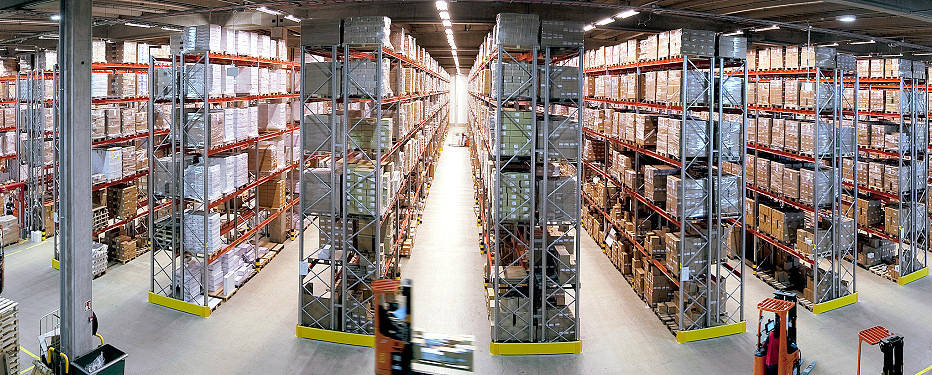
Insights
COVID-19 Fallout Transforms the Future of Manufacturing

LOCALIZED PRODUCTION / TRANSFORMING SUPPLY CHAINS
Most notably, the pandemic made manufacturers realize the benefits of localized production and its ripple effects of mitigating supplier risks, improving efficiency and ensuring delivery of raw materials. The larger trend is towards reshoring to ensure customer proximity, labor supply and synergies in the business ecosystem, all leading to advantages of faster time to market, lower working capital, favorable government policies, and increased resiliency.
To transform supply chain, companies will look for seamless integration of end-to-end solutions for increasing traceability and transparency within the entire ecosystem. By implementing technologies such as cargo-tracking, cloud-based GPS, and RFID, companies can have visibility into nearly every part of the supply chain along with the clear benefit of reacting appropriately to the unexpected.
EMERGENCE OF DIGITAL FACTORIES
Much has been written about the importance of Industry 4.0 and how it’s helping manufacturers to increase operational visibility, reduce costs, expedite production times, and deliver exceptional customer support. In 2021, the focus on digitalization will continue to be a priority for most manufacturers. Investment in technologies such as sensors, machine learning, real-time monitoring, autonomous systems, digital twinning will help build resiliency and achieve significant efficiency gains.
Fixing Broken Supply Chains is Now a Priority

Broken supply chains are now a discussion topic in video conferences and board meetings. Prior to 2020, most executives viewed the supply chain as an area of cost-saving rather than an area of stability and differentiation. But when you strip costs out of the supply chains you invariably increase risk, and the 2020 pandemic exposed this risk.
Localizing supply chains mitigates these risks, reduces transportation delays, and increases sustainability of the system by reducing carbon emissions. To make supply chains more sustainable and cost-effective, companies need to see and itemize every step in their supply chain — from where every piece is manufactured, to how the product is packaged and how that product gets delivered to the end user.
Say Goodbye to Factories That Are Half-Way Around the World

As a result of recent global disruptions, manufacturing will likely see a fundamental shift away from globally distant footprints toward a more localized model, with nimbler and more flexible structures.
In 2021, the industrial manufacturing sector will take a page from the consumer-driven “farm to table” trend that has taken hold in the agriculture industry over the last decade, with a shift to localized production.
This will primarily be driven by the threat of ongoing trade war/tariffs threatening global supply chains, encouraging manufacturers to move production activity closer to the customer. In the future, manufacturers will want to build where they sell for several reasons, including faster time to market, lower working capital, government policies, and increased resiliency.
The pandemic also gave manufacturers a painful lesson about the fragility of relying on labor, access to physical space, and centralized factories half-way around the world to produce goods. Fortunately, advanced technology – sensors, machine learning, computer vision, robotics, cloud computing, edge computing, and 5G network infrastructure – has proven to increase supply chain resiliency for manufacturers who adopt it. While manufacturing lines present a unique set of challenges, tech companies will continue to focus on bringing the value of these advancements to verticalized settings as the industry realizes they must diversify their factory operations and embrace Industry 4.0 technology to become more resilient.
New Buy American Policies Will Supercharge Domestic Supply Chains

President-Elect Biden has pledged to establish a new “Made in America” office within the Office of Management and Budget. The office will coordinate interagency Buy American policy, review waivers and general compliance, and establish additional transparency rules.
To complement the strengthened Buy American orders, President-Elect Biden plans to pursue aggressive tax reforms to return key supply chains to the United States. President-Elect Biden plans to pursue the following tax policies:
- A 10% Offshoring Penalty Surtax on profits of any production by a U.S. company overseas for sales back to the U.S.
- Elimination of tax offshoring loopholes found in the 2017 Tax Cuts and Jobs Act
- A Made in America tax credit of 10% for investments that create jobs for American workers
Eligible investments could include reshoring production to the United States, revitalizing closed facilities, retooling facilities to meet advanced manufacturing capabilities for key industries, and expanding manufacturing payroll.
https://www.lexology.com/library/detail.aspx?g=d5997117-11b2-4388-95d8-0e627fcbb486
Localized Supply Chains Are Necessary For Better Pandemic Preparadness
The tariff war and COVID-19 exacerbated pre-existing fragility of global supply chains for many industries. This fragility is especially prevalent in the bioscience and pharma sectors, where China supplies 40% of all Active Pharmaceutical Ingredients (APIs) globally and, where India supplies 75% to 80% of APIs to the U.S.
For antibiotics in particular, global supply chains have been negatively impacted as a result of COVID-19-related disruptions. As essential components of pandemic preparedness, antibiotics and other medicines are vital to national security. Yet, China supplies the majority of generic antibiotics on which we rely.
We are therefore seeing a clear movement within the bioscience and pharma industries toward securing redundant and localized supply chains for ingredients and medicines that are essential to the health and well-being of society. https://www.lifescienceleader.com/doc/ceos-weigh-in-on-the-supply-chain-nationalism-and-the-reshoring-of-biopharma-manufacturing-0001
Contact Us

